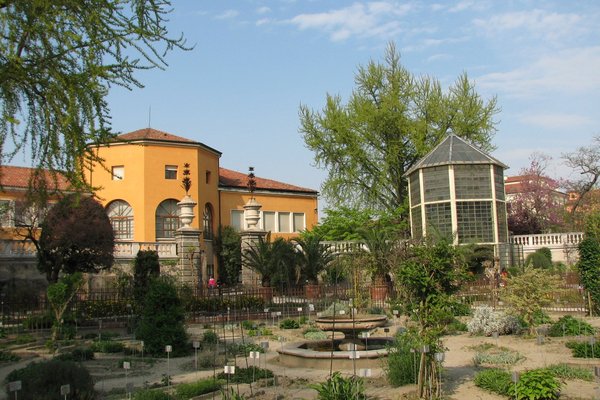Italy
Botanical Garden, Padua
The Botanical Garden (Orto Botanico), Padua is the oldest University Botanical Garden in the world, which has kept its research and didactic features unchanged for centuries.
The Garden was established in 1545 by the University of Padua and has been a great influence on other botanical gardens around the world. At first geared toward the growth of medicinal plants, it was later enriched with plants from all over the world brought in by the Venetian Empire. The Garden houses an extensive herbarium and a scientific library.
Community Perspective: This smallish garden is a pleasant and quiet oasis in the city center, with the 'Goethe palm' from 1585 as its "star". There’s an old and a new part, the latter with a large greenhouse housing plants from different climates.
Site Info
Official Information
- Full Name
- Botanical Garden (Orto Botanico), Padua (ID: 824)
- Country
- Italy
- Status
-
Inscribed 1997
Site history
History of Botanical Garden, Padua
- 1997: Inscribed
- Inscribed
- Type
- Cultural
- Criteria
- ii
- iii
Links
- UNESCO
- whc.unesco.org
- Official
-
- ortobotanicopd.it — Botanical Garden of Padova
- Related
-
- en.wikipedia.org — Wikipedia
All Links
UNESCO.org
- whc.unesco.org — whc.unesco.org/
Official Website
- ortobotanicopd.it — Botanical Garden of Padova
Related Resources
- en.wikipedia.org — Wikipedia
Community Information
- Community Category
- Secular structure: Park or garden
Travel Information
Veneto hotspot
Recent Connections
-
Perfect Inscriptions
1997 -
Built in the 16th century
established in 1545 -
Goethe
Connections of Botanical Garden, Padua
- Individual People
- History
- Architecture
- World Heritage Process
-
-
Perfect Inscriptions
1997 -
WHC locations
Naples (1997)
-
- WHS on Other Lists
-
-
World Monuments Watch (past)
(1998); Liguria (2002, 2000)
-
- Timeline
-
-
Built in the 16th century
established in 1545
-
- WHS Hotspots
-
-
Veneto hotspot
Padua is 30min by train from Venice
-
- Science and Technology
-
-
Universities
Part of University of Padua -
Libraries
Scientific library -
Botanical Gardens
-
News
No news.
Recent Visitors
Visitors of Botanical Garden, Padua
- AC
- Adrian Turtschi
- Afshin Iranpour
- Aitia
- Alberto Rodriguez Gutierrez
- Alexander Barabanov
- Alexander Lehmann
- Aljaz
- Alvaro1404
- A. Mehmet Haksever
- Ammon Watkins
- Ana Lozano
- AndreaTLV
- Ansitong
- Antonio J.
- Argo
- Artur Anuszewski
- Aspasia
- Assif
- Astraftis
- a.thum
- Atila Ege
- awestix
- Badwater
- BaziFettehenne
- Bernard Joseph Esposo Guerrero
- Bill Maurmann
- Bin
- Bodil Ankerly
- butterflybird
- Carlos Sotelo
- Caspar
- Cezar Grozavu
- chenboada
- chenqtao
- Cheryl
- Christer Sundberg
- Christian Wagner
- christof
- Christoph
- Claire Bradshaw
- Cluckily
- Clyde
- Colossus
- Coppi
- Cristina Erba
- Csaba Nováczky
- CugelVance
- Cyberczar
- Dagmara
- Damientournay
- Daniela Hohmann
- Daniel Chazad
- Dan Pettigrew
- dave wood
- David Aaronson
- David Berlanda
- del
- Dennis Nicklaus
- Dimitar Krastev
- Dimitrios Polychronopoulos
- Dolemite92
- Don Irwin
- Dorejd
- Dr. Caligari
- Dwight Zehuan Xiao
- edstar500
- Elaine McArdle
- Elia Vettorato
- Els Slots
- erdsaumnaht
- Erik Jelinek
- Errol Neo
- Eva Kisgyorgy
- fabi-ddorf
- Fan Yibo
- Farinelli
- Federico P.
- Frédéric M
- Frederik Dawson
- GabLabCebu
- Gary Arndt
- Geert Luiken
- George Gdanski
- GeorgeIng61
- GerhardM
- Gjert
- Hadrianus
- Harald T.
- Harry Mitsidis
- Hasco
- henrik_hannfors
- Hubert
- Hurrvinek
- Iain Jackson
- Ian Cade
- Ilya Burlak
- inomusay
- Ivan
- Ivan Rucek
- Jaakkotoivanen
- Jackson
- jacob76
- Jakob F.
- James Bowyer
- Jana and Matt
- Janina Lehmann
- janis
- Jan-Willem
- Jan Zimmermann
- Jarek Pokrzywnicki
- Jasam
- Jay T
- Jeanne OGrady
- Jeffrey Chai
- Jens
- Jezza
- Jgriffindor6
- JL
- João Aender
- JobStopar
- Joel on the Road
- John Smaranda
- Jonas Hagung
- Jonas Kremer
- Joyce van Soest
- Justin
- KarenBMoore
- Karito Vies
- Kbecq
- Ken DJ
- Klaus Freisinger
- KngAlaric
- Krijn
- Krzysztof B
- Kurt Lauer
- kutasp
- La Concy
- Lara Adler
- Laurey
- LaVale
- lindaann
- Lisu Marian
- Loic Pedras
- Luboang
- Lucio
- Ludvan
- Luis Filipe Gaspar
- Lukasz Palczewski
- lynnz317@aol.com
- Maciej Gil
- Malgorzata Kopczynska
- Małgosia Łupicka
- marcel staron
- Marlies van Wolfswinkel
- Martin
- Martinacurra88
- Martina Rúčková
- Marton Kemeny
- maryhattie
- MAURO PODDA PANI
- MaYumin
- MH
- Mia esguerra
- Michael Ayers
- MichaelH
- Michael Novins
- michaelsballard
- Michael Turtle
- Mihai Dascalu
- Mikko
- Mikko Syrjä
- Milan Jirasek
- MMM
- Mo-han Je
- Mohboh
- Monica Tasciotti
- MoPython
- Morodhi
- Mtlmr
- MystRivenExile
- nan
- Nasebaer
- Nick M
- Nihal Ege
- PabloNorte
- Patrik
- Paul Schofield
- PeterH
- Peter Lööv
- Petteri
- Philipp Leu
- Philipp Peterer
- phillipmeng
- Pincze
- Piotr Wasil
- Porcho
- Priyaranjan Mohapatra
- puessergio
- Purrfect
- Rafał Kałczuga
- Ralf Regele
- Ralf Rotheimer
- Randi Thomsen
- Remigiusz
- Riccardo Quaranta
- Rick Ohm
- Roccobot
- Roger Ourset
- Roman Bruehwiler
- Rudegirl
- Sabrina Liebehentschel
- Samy G
- SDMArado
- Sehnsuchtsbummler
- Sergio Arjona
- Shandos Cleaver
- Shijie ZHU
- SirLoydd
- Slavi
- Solivagant
- Squiffy
- Stanislaw Warwas
- stephanvermeulen
- Stijn
- Svein Elias
- Szabolcs Mosonyi
- Szabo Viktoria
- Szucs Tamas
- takanenohana
- Tamara Ratz
- Taotao Chen
- Tarquinio_Superbo
- Tatiana Nikulnikova
- thisispivi
- Thomas Buechler
- Thomas van der Walt
- Tim Allen
- tingmelvin
- tommasorossotti
- Tonisan
- tony0001
- Traveling Girl
- triath
- Tsunami
- Valentina
- Vanessa Buechler
- VB73
- Viaje al Patrimonio
- WalGra
- Walter
- WILLIAM RICH
- Wimmy
- Wojciech Fedoruk
- Xander Huang
- Xiong Wei
- Xiquinho Silva
- Yevhen Ivanovych
- Yongcheng Liu
- Zhenjun Liu
- Zoë Sheng
- Zos M
Community Reviews
Show full reviews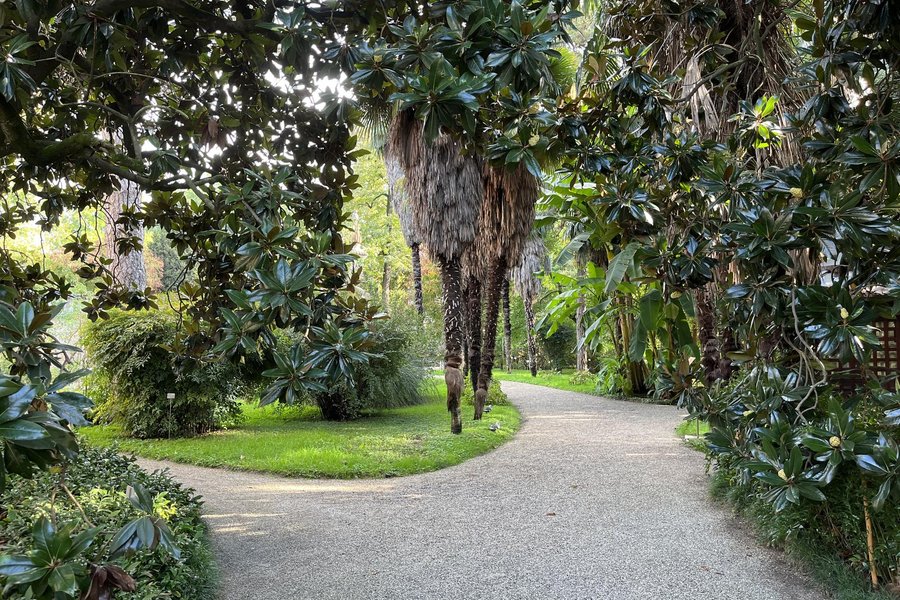
I visited the botanical gardens in late September 2018 on a warm and sunny day. Having seen a lot of old towns and churches recently, these gardens came as a lovely surprise. Not being particularly interested in gardens or gardening, I was not greatly enthused by the thought of this visit, however I thoroughly enjoyed the 2 hours I spent here. The garden is in two parts, the old, historical garden and a new garden contained within a large metal and glass building. The two could not be more different, but both were equally enjoyable, focusing on different aspects of our interactions with plants over time.
The old garden was not at its best at this time of year, and I felt that it was a little untidy and unloved in places. The sense of history was palpable though, and it was fascinating to understand the role of the garden in influencing other botanical gardens and botanical studies around the world.
The new garden had a similar feel to the Eden Project in Cornwall, UK, in that it housed plants from different climates, such as Arid, Temperate, Rainforest etc. The focus here though was more on human's relationship with plants, through history, and into the future. It was actually very interesting.
The cost, which includes both gardens is EUR 10 per adult. The gardens are located to the south of the city, just past the incredible St Anthony's Basilica, and about a 25 minute walk from the …
Keep reading 0 comments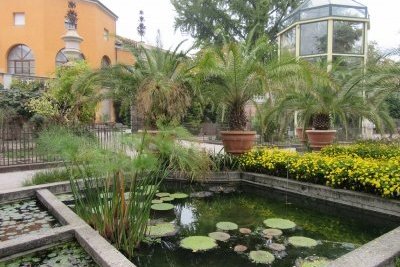
I enjoy a good botanical garden when traveling, so I looked forward to visiting the Botanical Garden in Padua last year, even though I knew I would be visiting out of season. The Orto Botanico was constructed almost five hundred years ago, and started a tradition of botanical research that can be seen in gardens worldwide. Considering its age, I set my expectations appropriately low enough, since there are many other gardens that cover more ground or feature a wider variety of plants from different climatic zones. The heritage section of the garden is laid out in a simple pattern, with a mixture of historic trees, medicinal and rare plants, and aquatic gardens on display. The garden is small enough that it didn't take long to traverse. Some of the plants were still in bloom, and some of the trees still had fruit in October; still, the cool breeze was a reminder winter was on its way. I think I'd like to return sometime in the spring or summer to see the garden when more plants are in bloom. Of note, there is a newer indoor botanical garden featuring plants from a variety of climates that you can visit on the same admission ticket. I still enjoyed the heritage garden more.
Logistics: The Botanical Garden of Padua is located south of the city center of Padua, and is a short walk south from the square in front of the Basilica of Saint Anthony.
Keep reading 0 comments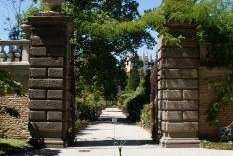
Certainly, the Orto Botanico is not a highlight among the World Heritage sites in Italy and even in Padua, the site is by far less popular with visitors than the famous Scrovegni Chapel or the Basilica of Saint Anthony.
I had visited the garden for the first time in 2004 and re-visited it on a weekend trip in August 2016. The memories of my first visit were not particularly good, at that time large parts of the garden were not well-kept and many plant beds were empty. But obviously, things have changed and today the garden is in very good condition. It is relatively small in size compared to other botanical gardens, but there is a great variety of species, a leaflet highlights the oldest and most important plants: an Oriental palm tree with a hollow trunk, a Gingko tree from the 18th century, a Magnolia from the 17th century, or the oldest tree the so-called "Goethe palm", planted in 1585. I found the collection of poisonous plant interesting, labels indicate their hazard level.
The reason for inscription was that the Orto Botanico was the first academic botanical garden and that it still has the original layout: a square in a circle, symmetrically divided by two intersecting paths. The circular perimeter wall, the fountains and the four iron gates have also been preserved.
Another thing that has changed since my first visit is the entrance fee, it was 10 euros in 2016. But this is justifiable because the entrance to …
Keep reading 0 comments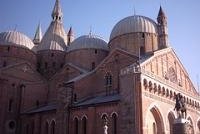
I visit this WHS in September 2008. Padua is a great city that is home to St. Anthony's Basilica, the Astronomical Clock and Italy's largest square, Prato della Valle. The Orto Botanico of Padua is the world's first botanical garden, it is an important site for scientific research, however I think it would be fair to include the historic centre of Padua with this inscription as it really deserves world heritage recognition and protection.
Keep reading 0 comments
Having looked at aerial maps of the site and knowing I would be visiting in winter I set my expectations low. However I did enjoy my visit but I don’t think it will be a highlight of most people’s time in north-eastern Italy.
The main factor for its inscription is the fact that it is the oldest existent botanical garden in the world, and the fact that it is still laid out to these original plans. It also houses a large collection of materials and data for cataloguing plants. Worthy I guess of being a world heritage site.
What can you expect; essentially a well laid out small park with the names of all the plants in Latin and a few water features, and if like me you visit in winter there will be some very bare looking plants. It certainly didn’t set my world alight, but the staff were friendly and there was a relaxing, out of the way ambiance.
Padua was a nice city, the centre was littered with impressive buildings and the Prato della Valle near the gardens was impressive. However Padua did house the absolute stand out sight in the north of Italy in the shape of the Scrovegni chapel which will make a truly world class WHS if it ever gets nominated from the tentative list, shame you missed it Els.
Not the greatest WHS but probably a worthy one due to it’s age and continuity, however if you are in Padua there is a …
Keep reading 0 comments
I presently visited the Orto Botanico di Padova, the original of all botanical gardens throughout the world and I was appalled by this place. The leading role in the introduction and study of many exotic plants was difficult to detect and the museum is farcical. Even if the garden is notable for its age it is not in a really good condition when you are focussing on plants and not on historical design. There is no reason to bewail the size of the squares where plants are allowed to grow because of the size of the garden. But there are no excuses for that concussive way of presenting plants - in any botanical garden. Many of the herbaceous plants were undernourished or even absent (please have a look on the photograph). I commendatory can say that every square has its nameplate but it really shocked me to discover for example missing Thyme which is very robust genus and able to cope with fierce conditions. In my eyes it is also questionable whether strawberry can be seen as a poisonous plant. Maybe the classification into that category portends that the leaves can be pharmaceutical useful but classifying Fragaria vesca as poisonous is incorrect. Anybody might explain this decision to me.
For me the visit in the Orto Botanico was a degrading event which really upset me a fortiori if you see this garden from an angle of an UNESCO World Heritage Site. It might represent the birth of science and scientific …
Keep reading 0 comments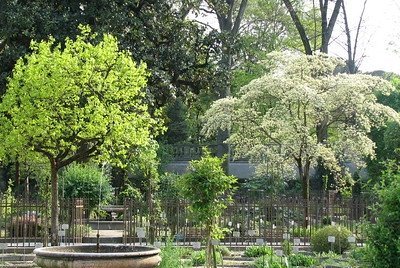
I visited Padua on the same day as Vicenza. They’re only about a half-hour apart by train, but you’ll have to make an early start and plan your trip well. I had pre-booked a visit to Padua’s most renowned sight, the Cappella degli Scrovegni (on Italy’s Tentative List), but arrived way too late to make the allocated time slot.
So I just walked on to the Botanical Garden. It is located on the other side of town from the railway station. The station area is rather scruffy, and the center of town also lacks atmosphere. The Garden however is a real oasis, pleasing to the senses and to my feet where all the walking was taking its toll. After paying a 4 EUR entrance fee you’re free to drop down on one of the benches in the garden. There were quite a number of other visitors around, even a bored-looking Belgian school class.
After giving my feet a rest, I roamed around the garden for an hour or so, trying to capture the few blossoming flowers on camera. The oldest plant around is the so-called Goethe palm, which dates from 1585. It was visited by Goethe in 1786, who got inspired by it to write about evolution. The palm nowadays is covered by a glasshouse.
The area is quite small, and the idea that everything has been here for such a long time is more interesting than the site itself. The nearby Basilica del Santo is worth …
Keep reading 0 comments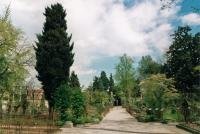
I have visited once the Botanical Garden of Padua, founded in 1545 by the University under the project of Andrea Moroni and of the humanist Daniele Barbaro, originally for containing 1500 plants, useful for the pharmacy, as the first botanical garden in the world. The 22000 sq. m. of its irregularly shaped area, originally enclosed by a high brick wall, represent the world surrounded by the ocean (Alicorno canal) and contain a closed circular garden 86 m in diameter, which enclosed a 41 m square plot; the entire garden is divided in four quadrants by pathways at right-angles to one another, running to the four cardinal points. Since the foundation of the garden, with many later additions, the four smaller squares created by the two pathways cutting the central square, are decorated with geometric flower beds, bordered with stone, in each of which is a plant specie. In 1704, when the four entrances were modified, the wrought iron gates giving to the inner circles and the four acroteria were placed on the eight pillars and surmounted by four pairs of wrought iron plants. In this period were also build two fountains, made of Istrian stone, outside the circular garden, and the nice balustrade, that runs for 250 m on the circular wall. Some of the greenhouses made of heated stone, that replaced the mobile conservatories, used for protecting delicate plants in the winter, retain the original heating system and the pumping installations. The library contains 50000 volumes and 1500 portraits …
Keep reading 0 comments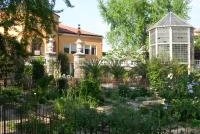
The Orto Botanico is yet another gem in the already amazing town of Padova. The garden itself is quite small, but it is notable for its age (founded in 1545) and its contribution to botany and agriculture in Italy. Hundreds of varieties of plants are on display in the circular grounds of the garden in the shadow of the imposing Basilica of St. Anthony, and the entrance fee for students is only 1 euro. Once you've explored the garden, don't miss the Basilica, the impressive Duomo and Baptistry, the truly stunning Cappella degli Scrovegni (with frescoes by Giotto), or any of the other numerous hidden treasures that Padova has to offer.
Keep reading 0 comments
